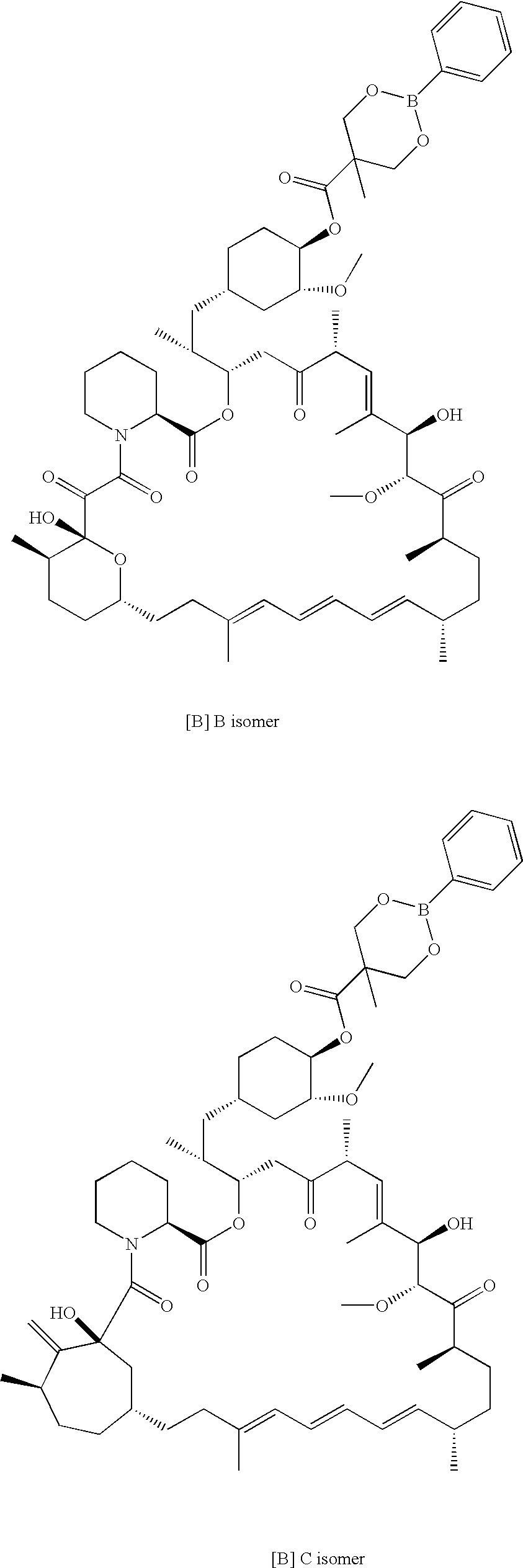Regioselective synthesis of CCI-779
- Summary
- Abstract
- Description
- Claims
- Application Information
AI Technical Summary
Benefits of technology
Problems solved by technology
Method used
Image
Examples
Embodiment Construction
The present invention provides a regioselective synthesis of a 42-ester of rapamycin by acylating a rapamycin 31-silyl ether with a compound of formula
HOOC.CR7R8R9
or a mixed anhydride thereof, wherein:
R7 is hydrogen, alkyl of 1-6 carbon atoms, alkenyl of 2-7 carbon atoms, alkynyl of 2-7 carbon atoms, —(CR12R13)fOR10, —CF3, —F, or —CO2R10; R10 is hydrogen, alkyl of 1-6 carbon atoms, alkenyl of 2-7 carbon atoms, alkynyl of 2-7 carbon atoms, triphenylmethyl, benzyl, alkoxymethyl of 2-7 carbon atoms, chloroethyl, or tetrahydropyranyl; R8 and R9 are taken together to form X; X is 2-phenyl-1,3,2-dioxaborinan-5-yl or 2-phenyl-1,3,2-dioxaborinan-4-yl,
wherein the phenyl may be optionally substituted; R12 and R13 are each, independently, hydrogen, alkyl of 1-6 carbon atoms, alkenyl of 2-7 carbon atoms, alkynyl of 2-7 carbon atoms, trifluoromethyl, or —F; and f=0-6; to give a 42-ester boronate 31-silyl ether of rapamycin.
Thereafter, the rapamycin 31-silyl ether, 42-boronate is h...
PUM
 Login to View More
Login to View More Abstract
Description
Claims
Application Information
 Login to View More
Login to View More - R&D
- Intellectual Property
- Life Sciences
- Materials
- Tech Scout
- Unparalleled Data Quality
- Higher Quality Content
- 60% Fewer Hallucinations
Browse by: Latest US Patents, China's latest patents, Technical Efficacy Thesaurus, Application Domain, Technology Topic, Popular Technical Reports.
© 2025 PatSnap. All rights reserved.Legal|Privacy policy|Modern Slavery Act Transparency Statement|Sitemap|About US| Contact US: help@patsnap.com



